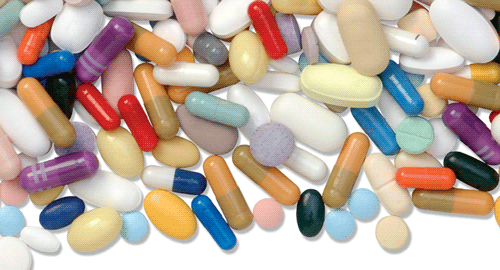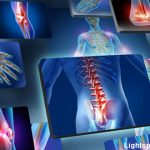 A recent study linked the use of proton pump inhibitors to changes in bone mineral density and an increased risk of developing osteoporosis. Also, denosumab proved effective at increasing bone mineral density in osteoporosis patients on glucocorticoid therapy.
A recent study linked the use of proton pump inhibitors to changes in bone mineral density and an increased risk of developing osteoporosis. Also, denosumab proved effective at increasing bone mineral density in osteoporosis patients on glucocorticoid therapy.
Proton Pump Inhibitor Use Linked to Bone Mineral Density
A recent cross-sectional study evaluated the association between proton pump inhibitor (PPI) use and bone mineral density (BMD) in patients referred to the Gastroenterology Department of Kashan University of Medical Sciences, Kashan, Iran.1 The researchers investigated the relationship between PPI use and BMD in 80 patients age 20–45 years old, which included 31 men and 49 women, none with a history of hip fracture.
The follow-up period was a minimum of two years. Half of the patients received a PPI and half did not. All participants had their femur and posterior–anterior spine BMD quantified by dual-energy X-ray absorptiometry. The primary endpoints were femur and lumbar spine T-scores. Secondary endpoints were femur and lumbar spine Z-scores. Multi-variate linear regression analysis was adjusted for age, sex, body mass index and serum vitamin D levels, and used to test the potential associations between PPI use and BMD.
Mean femoral T-scores were significantly different between PPI users and non-users (-0.44 ± 1.11 vs. +0.19 ± 0.95, P = 0.007). Additionally, the frequency of femoral osteoporosis and osteopenia in the PPI-users group was significantly more than in the control group (P=0.04). However, the mean femoral Z-scores, lumbar spine T-score and lumbar spine Z-score were not statistically different between the PPI-user and the PPI-non-user groups. The study’s authors concluded that PPI use in individuals without osteoporosis risk factors had an increased risk of developing femoral osteoporosis and osteopenia.
Denosumab & Glucocorticoid-Induced Osteoporosis
In late August, Amgen reported the positive results of a Phase 3 study of denosumab in glucocorticoid-treated patients.2 This 24-week, international, multi-center, randomized, double-blind, double-dummy, active-controlled, parallel-group study was conducted in adults (n=795) receiving oral glucocorticoid therapy.
The study was designed to compare the safety and efficacy of treatment with 60 mg subcutaneous denosumab given every six months with the daily use of 5 mg oral risedronate. Two patient subpopulations were evaluated: 505 patients receiving continuous glucocorticoid therapy, defined as receiving more than 7.5 mg prednisone daily or its equivalent for more than three months and planning to continue treatment for at least six months; and 290 patients who were newly initiating glucocorticoid therapy, defined as receiving more than 7.5 mg prednisone daily or its equivalent for longer than three months and planning to continue treatment for at least six months. The primary endpoint was the percentage change from baseline in lumbar spine bone mineral density at Month 12 (to assess non-inferiority). Two secondary endpoints were the percentage change from baseline in lumbar spine and total hip bone mineral density (assessing superiority) at Month 12.
